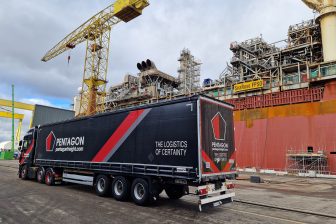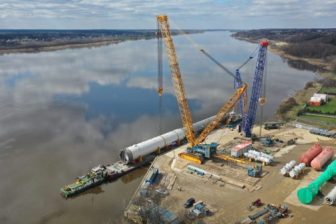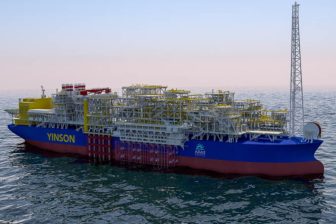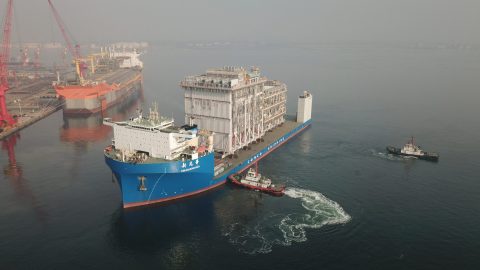
Heaviest Arctic LNG 2 module delivered to Murmansk
The construction of the Novatek-led Arctic LNG 2 project on the western shore of the Gydan Peninsula in Russia is a massive undertaking. Being one of the world’s largest LNG projects under construction currently, the project requires moving large modules from the manufacturers to the construction site for assembly.
The heaviest of the module for Arctic LNG 2 comes in at 14,000 metric tons and it has recently been rolled onto the COSCO Shipping Heavy Transport’s semi-submersible vessel, Xin Guang Hua. The module was transported to the vessel using a world record 630 axles SPMT (self-propelled modular transporter). The load-out highlighted the capabilities of COSCO’s vessel as well as the crews.
Transport of the heaviest Arctic LNG 2 module has been assigned to COSCO Shipping Heavy Transport by the project contractor, Technip Energies. After the loading operation was completed at the start of December at Tianjin port in China, the module was delivered to the LNG Construction Center in Murmansk, Russia in mid-January.
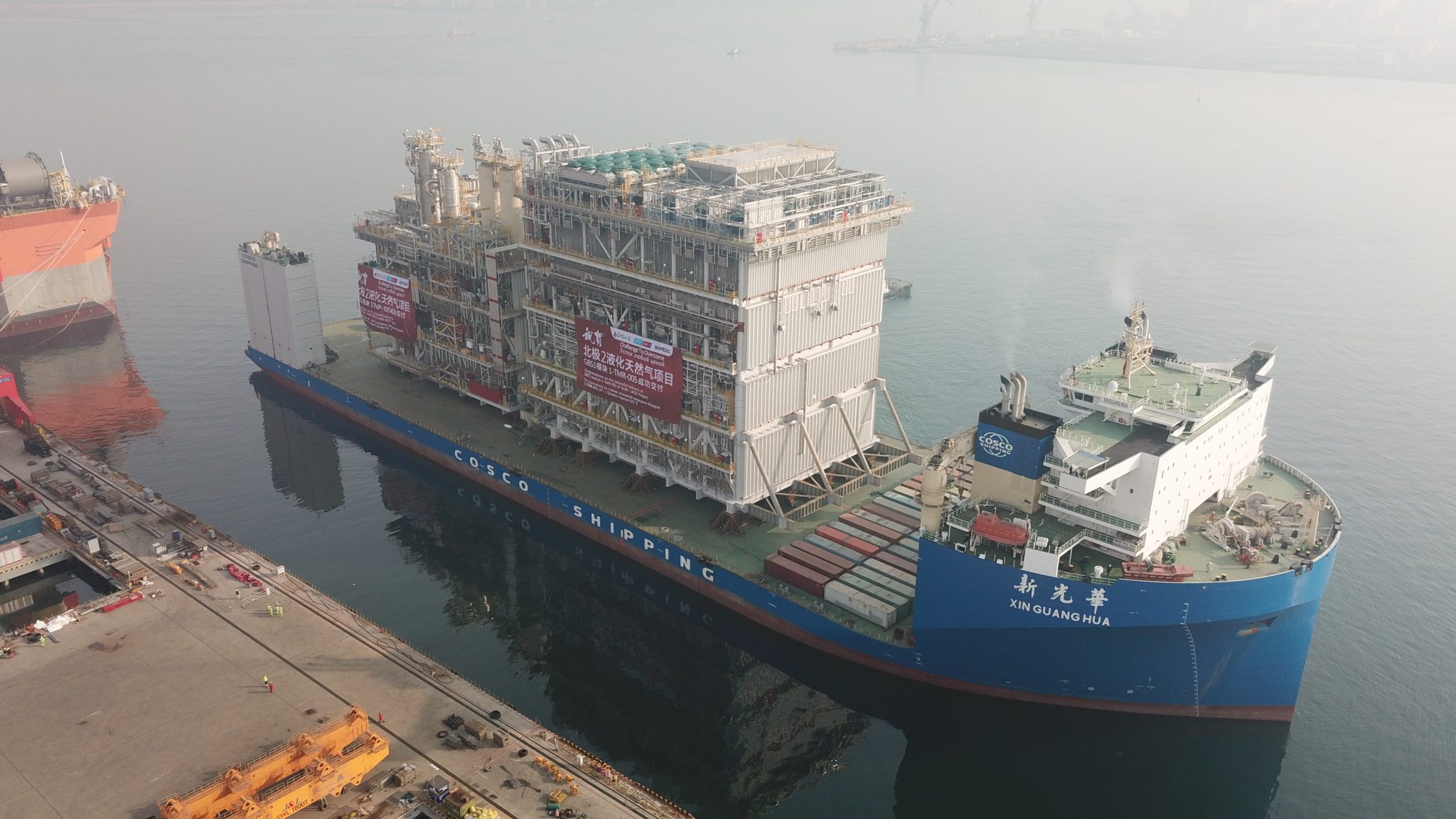
At Murmansk the module will be skidded onto the GBS (Gravity Base Structure) platform that will make up Arctic LNG’s first production train. Once the GBS1 platform is integrated with all topside modules, the complete structure will be towed to the western shore of the Gydan Peninsula, and placed onto the river bed in its final location. In total, three GBS platforms will be installed in Gydan.
In total three LNG trains will be built each on top of their individual concrete gravity-based structure (GBS) that will be floated into position at the shoreline off Gydan. Each of the three trains will deliver 6.6 million tons per annum of liquified natural gas, considered one of the key energy transition fuels as gas is 40 per cent less CO2 intensive than coal. The first train is expected to be launched in 2023.
he project’s participants include Novatek (60 percent), TotalEnergies (10 percent), CNPC (10 percent), CNOOC (10 percent) and Japan Arctic LNG, a consortium of Mitsui & Co. and JOGMEC (10 percent).
You just read one of our premium articles free of charge
Register now to keep reading premium articles.


